These days, AI isn’t just some faraway idea; it’s a key factor in how companies in all kinds of sectors are changing their operations. Artificial intelligence (AI) is changing the way businesses function by automating mundane operations and providing customers with more tailored experiences. At the heart of this shift is the development of AI applications, which allow organizations to create intelligent systems that can learn, adapt, and optimize their performance over time.
This book will walk you through the ins and outs of developing an AI application, including the significance of the technology for organizations, the processes involved, real-world examples, obstacles, solutions, and what’s to come. You will leave this course with an in-depth knowledge of how your company can use AI-powered apps to develop sustainably.
Table of Contents
What is AI Application Development?
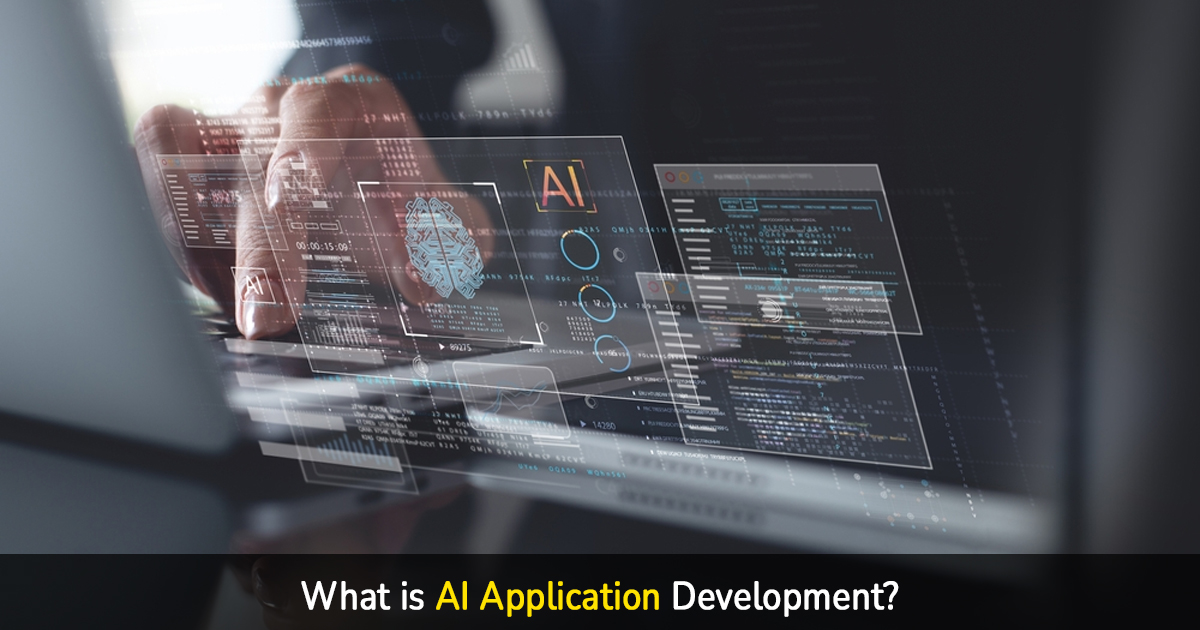
Development of AI applications entails planning, constructing, and releasing software programs that make use of AI technologies including computer vision, predictive analytics, machine learning (ML), and natural language processing (NLP).
Applications driven by artificial intelligence (AI) may do things like analyze data, spot trends, make predictions, and get better with time all without explicit programming unlike traditional software that follows pre-defined rules. Examples includes:
1- Chatbots that give real-time customer help.
2- Software that Amazon and Netflix employ to make recommendations.
3- Equipment for predictive maintenance in the industrial sector.
4- Systems for detecting financial fraud.
Why AI Application Development Matters for Businesses

To maintain a competitive edge, businesses are putting more and more money into AI. When businesses use AI, efficiency, decision-making, and consumer engagement all go up a notch, says McKinsey. Reasons why developing AI applications is essential include:
1- Enhanced Decision-Making
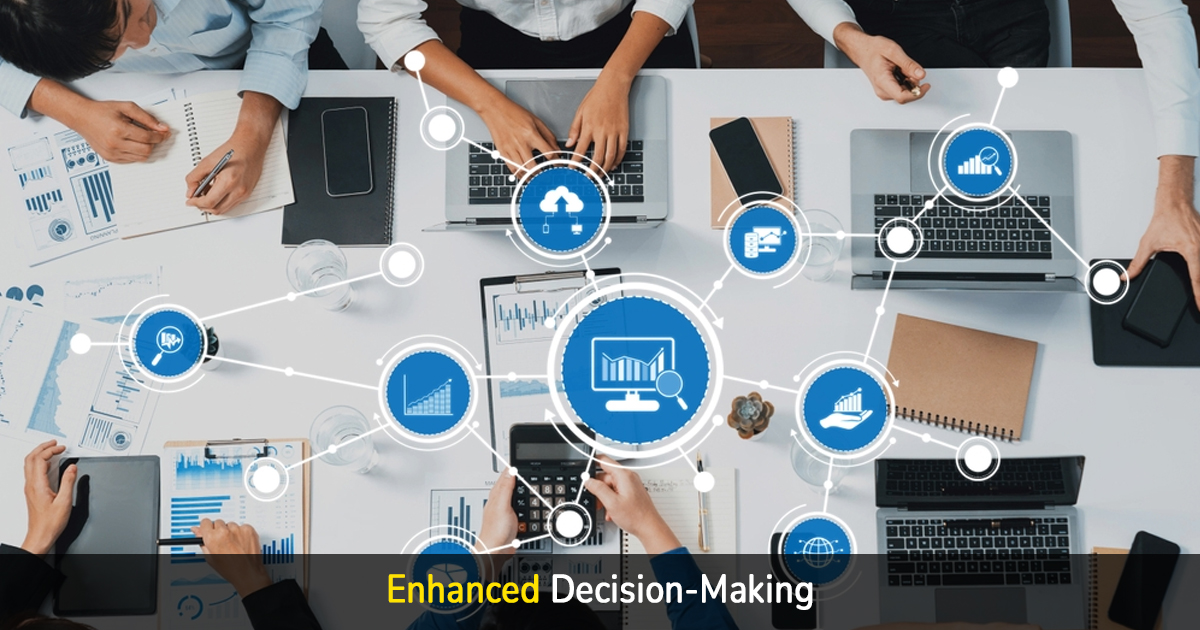
Artificial intelligence programs swiftly sift through mountains of data, revealing useful patterns that might inform better business decisions.
2- Improved Customer Experience
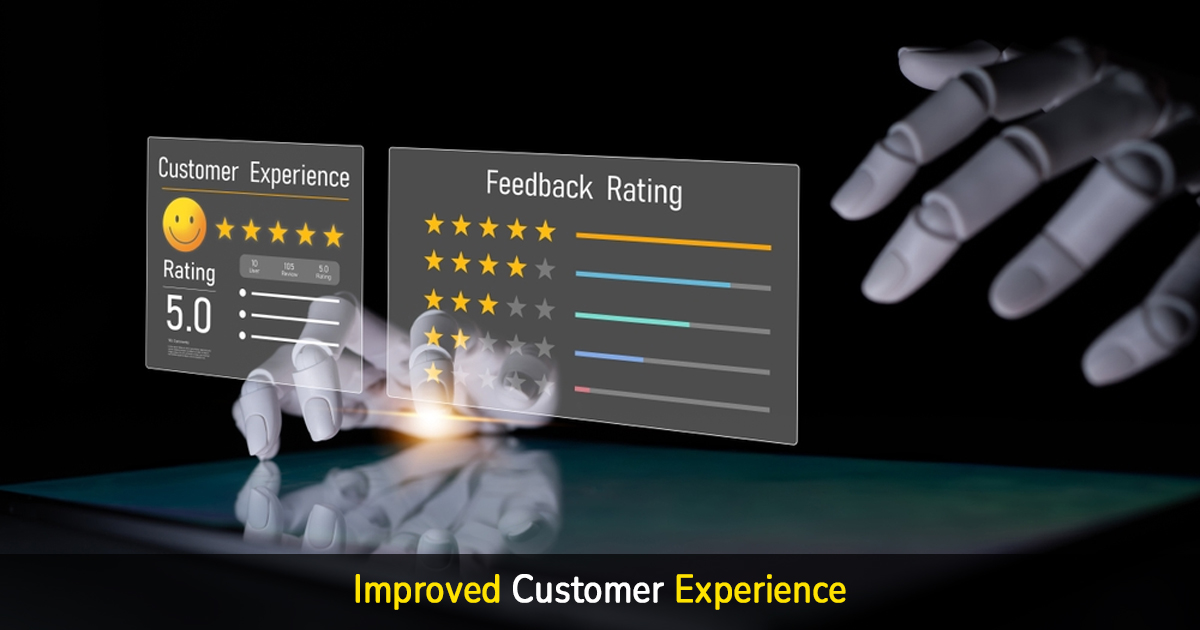
Companies can provide customized experiences in a variety of ways, including purchasing suggestions and chat help powered by artificial intelligence.
3- Cost Efficiency
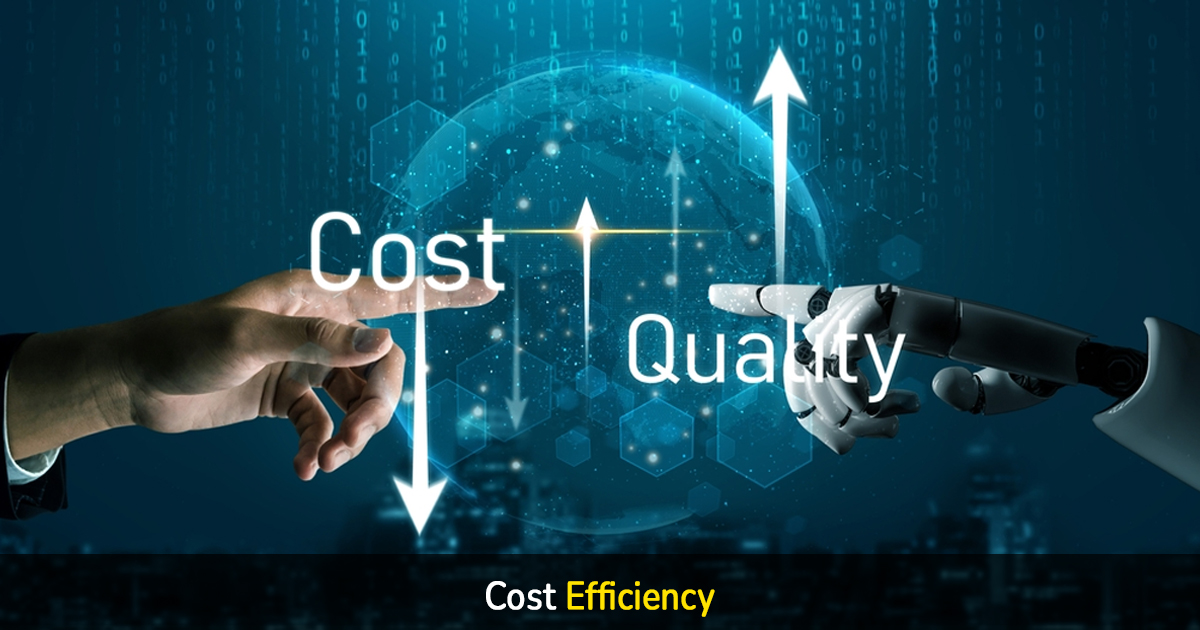
Labor costs are reduced and operational efficiency is increased through the automation of regular processes.
4- Innovation & Growth

New revenue streams, product lines, and business models can be unlocked through the use of AI.
5- Competitive Advantage
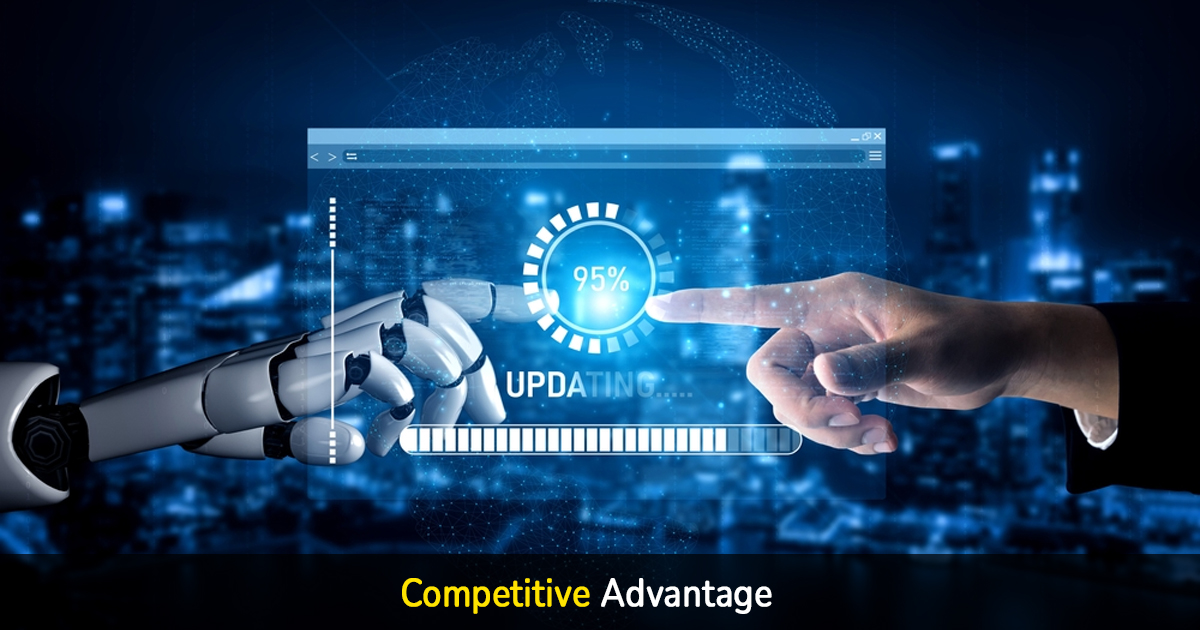
To remain ahead of the competition, businesses are utilizing AI to respond faster to customer wants and market trends.
The AI Application Development Process
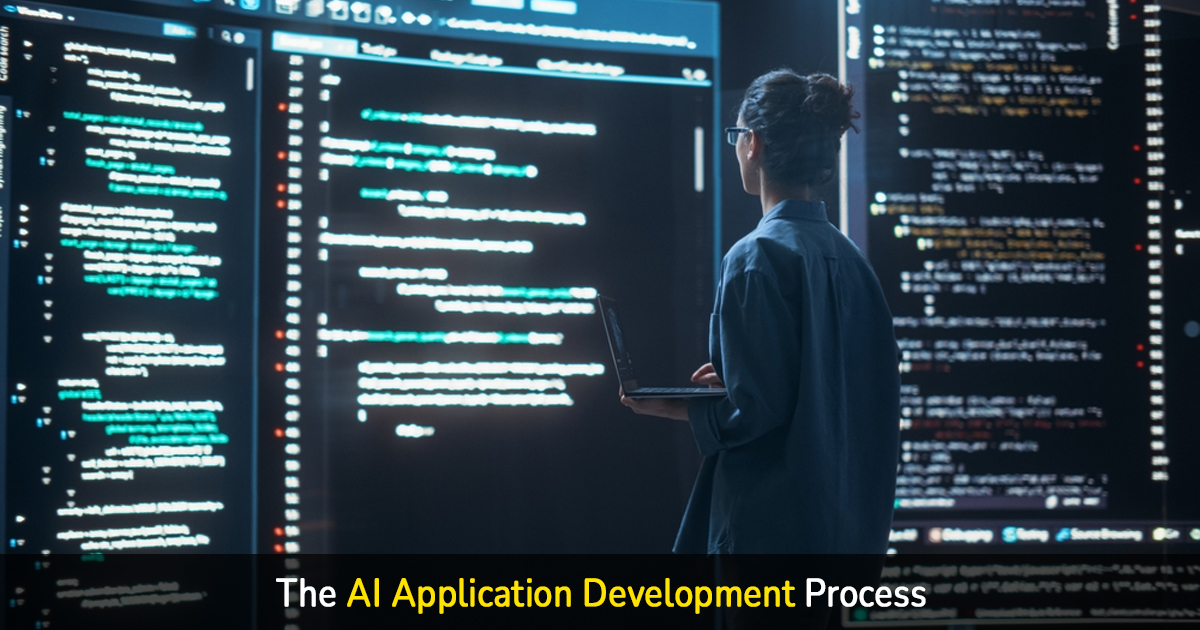
It takes meticulous preparation, accurate data, and specialist knowledge to build an AI application. This is a detailed explanation:
1. Identifying Business Goals

Businesses need to identify the problem they are trying to tackle using AI before they can begin development. Do you wish to improve fraud detection, streamline inventory management, or decrease customer turnover, for instance?
2. Data Collection and Preparation

AI is data hungry. It is vital to get both organized and unstructured data from many sources. Data needs to be prepared for AI models by cleaning, organizing, and labeling it.
3. Choosing the Right AI Model
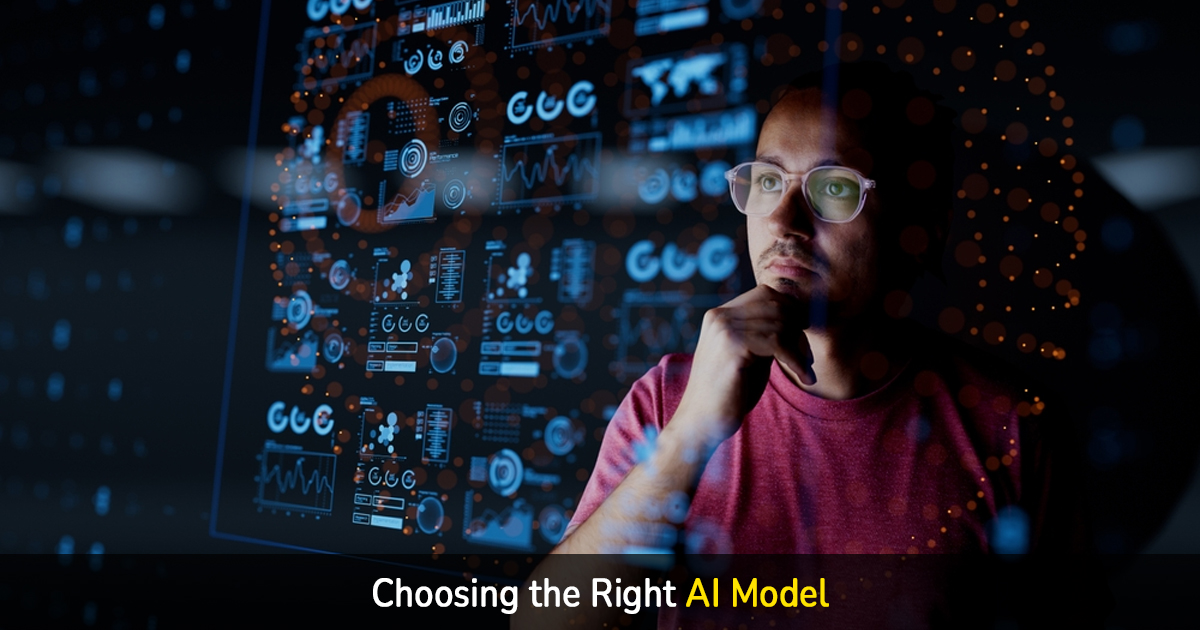
When faced with an issue, corporations often turn to:
- Predictions built using Machine Learning models.
- Natural Language Processing models for chatbots.
- Machine vision algorithms for picture identification.
4. Development and Training

Frameworks such as Scikit-learn, Tensor Flow, or PyTorch are used by developers to construct the AI application. In order to train the model to a certain level of accuracy, it is fed datasets.
5. Testing and Validation
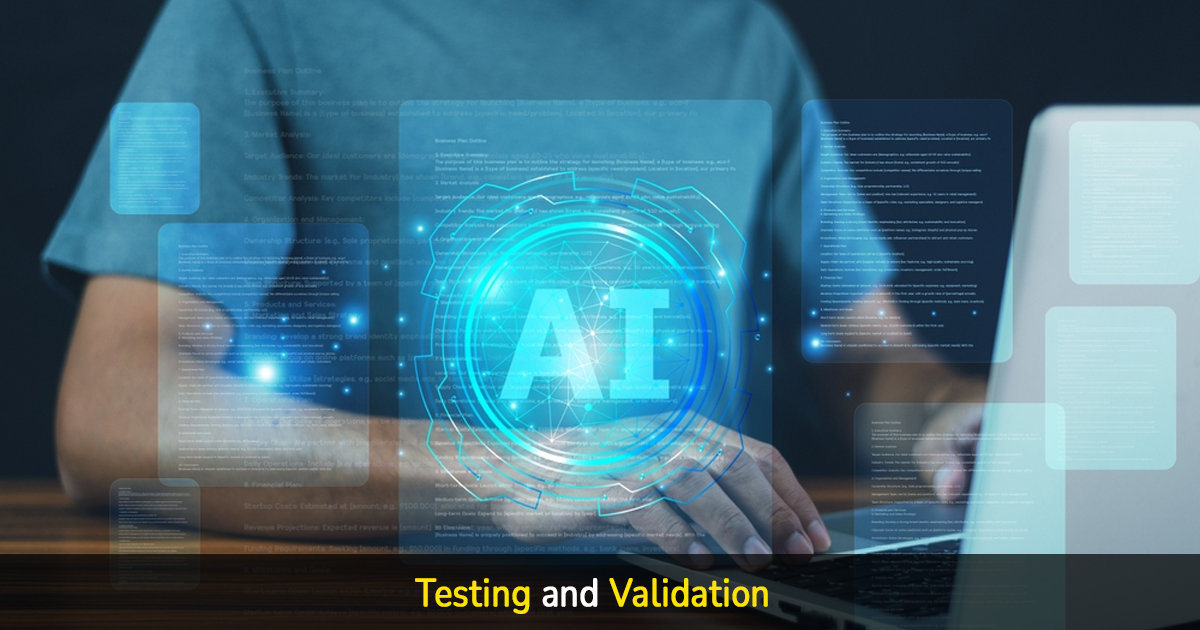
Accuracy, efficiency, and scalability are tested thoroughly in the application. Preventing biases or incorrect predictions requires testing.
6. Deployment and Integration

After it passes all necessary tests, the AI software is put into production and linked to the company’s current CRM, ERP, or cloud platform.
7. Monitoring and Maintenance

To learn from new data and keep their accuracy over time, AI models need constant vigilance.
Key Use Cases of AI Application Development in Business
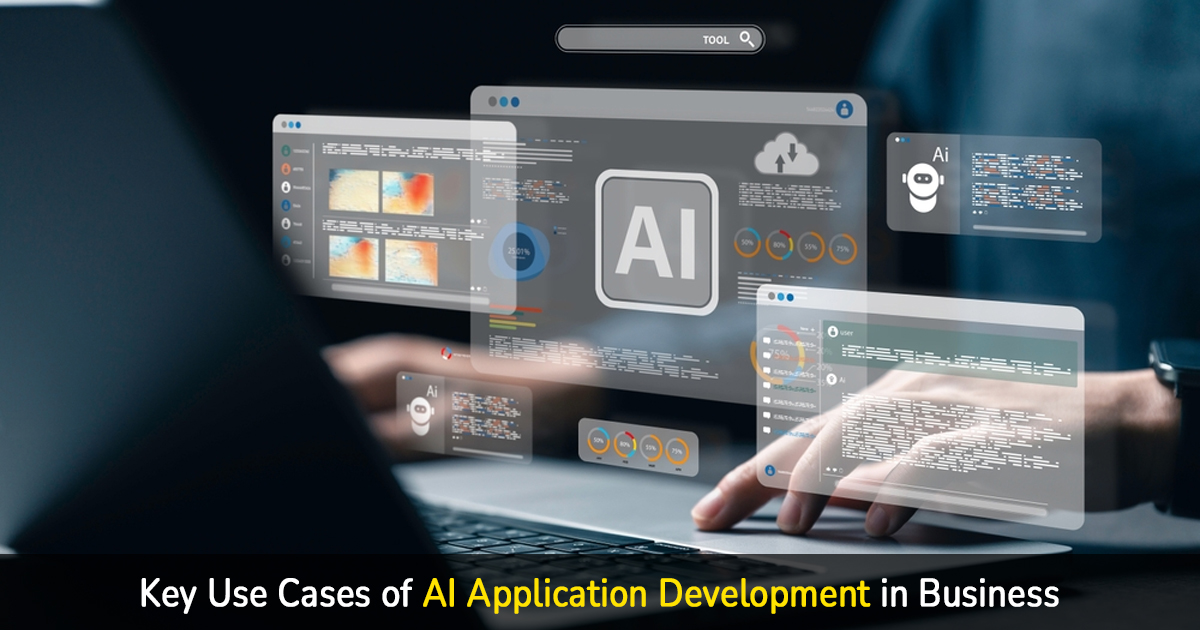
Artificial intelligence applications are revolutionizing various industries:
1. Customer Service

24/7, AI chatbots and virtual assistants respond to consumer inquiries, increasing satisfaction and decreasing response times.
2. Marketing & Sales

Recommendation engines powered by AI study consumer actions to provide tailored recommendations.
3. Healthcare

Diagnostics, patient monitoring, and medication development are all areas that benefit from AI applications.
4. Finance

Artificial intelligence applications are crucial for detecting fraud, assessing risk, and automating trade.
5. Manufacturing

Reducing downtime and maximizing efficiency are two goals of predictive maintenance and quality control.
6. Retail & E-commerce

Inventory optimization, demand forecasting, and personalized shopping experiences are all made easier with the help of AI.
Benefits of AI Application Development
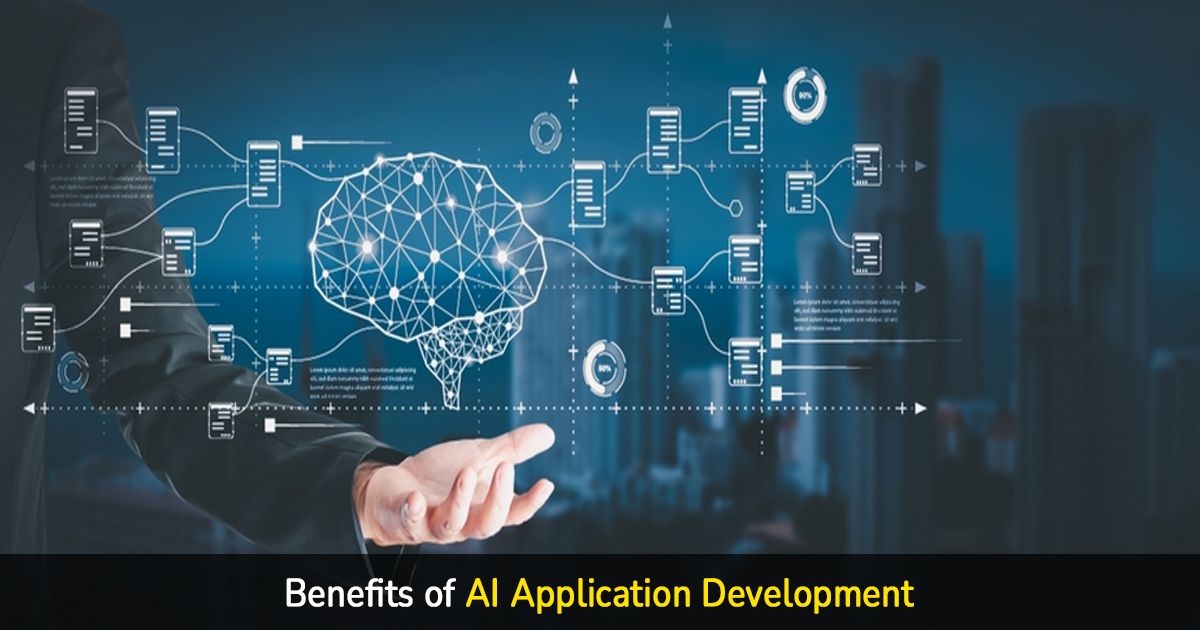
When companies invest in developing AI applications, they can reap several benefits:
- Automation of mundane processes increases productivity by freeing up workers’ time.
- Customization on a Massive Scale: Provide customized services to a user base of millions.
- Foresee trends and make proactive decisions with predictive insights.
- Your company’s demands can be met as your AI solution expands.
- Data-Driven Culture: Give teams the authority to make decisions based on facts, not guesswork.
Challenges in AI Application Development
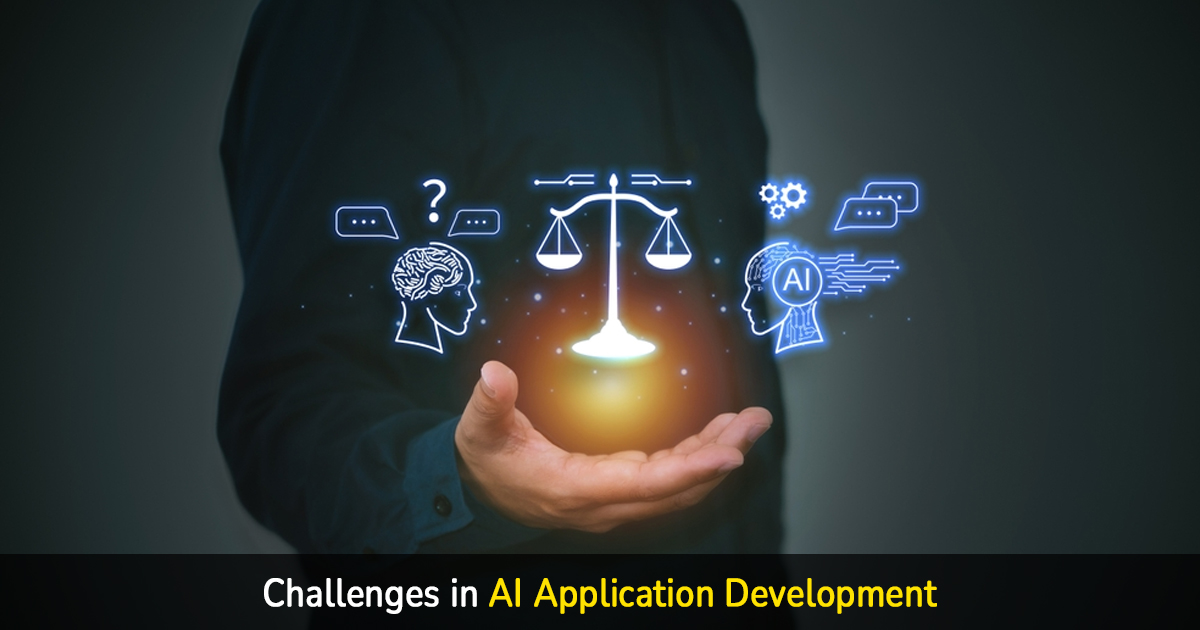
The development of AI is not without its difficulties, despite its promise:
- Problems with Data Quality: Inaccurate forecasts are the result of inadequate or poor data.
- Artificial intelligence (AI) apps necessitate heavy expenditure on equipment and knowledge, which drives up development costs.
- A scarcity of qualified candidates has created a demand for data scientists and AI engineers.
- Difficulty with Integration: Combining AI with preexisting systems could be a real pain.
- Bias in AI algorithms could provide unfair results, which raises ethical concerns.
- Data privacy rules, such as GDPR, require businesses to adhere to certain regulations.
Best Practices for Successful AI Application Development
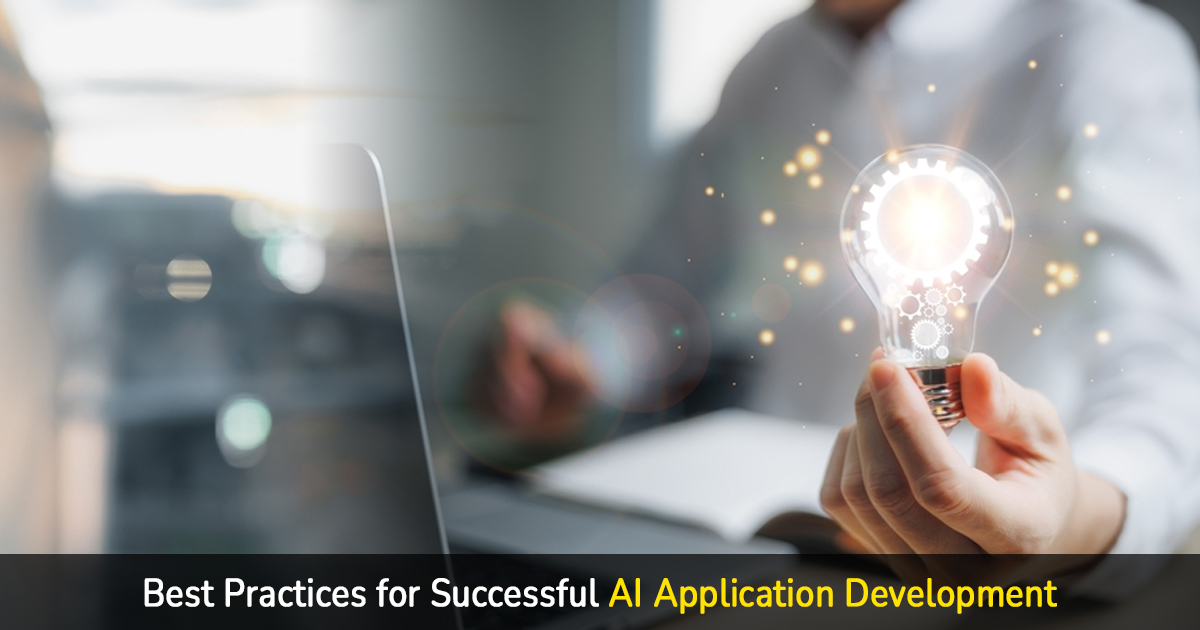
In order to conquer obstacles, firms should follow these guidelines:
- Do Small Things First—Start with trial projects and work your way up to implementing them department-wide.
- Data cleaning and governance are crucial to ensuring high-quality data.
- Join Forces with Industry Leaders—Collaborate with developers, domain experts, and AI experts.
- Put an emphasis on ethical AI by including principles of justice, openness, and responsibility.
- Use the Cloud: AI deployment is made easier using cloud platforms like Google AI, Azure, and Amazon Web Services (AWS).
Future Trends in AI Application Development
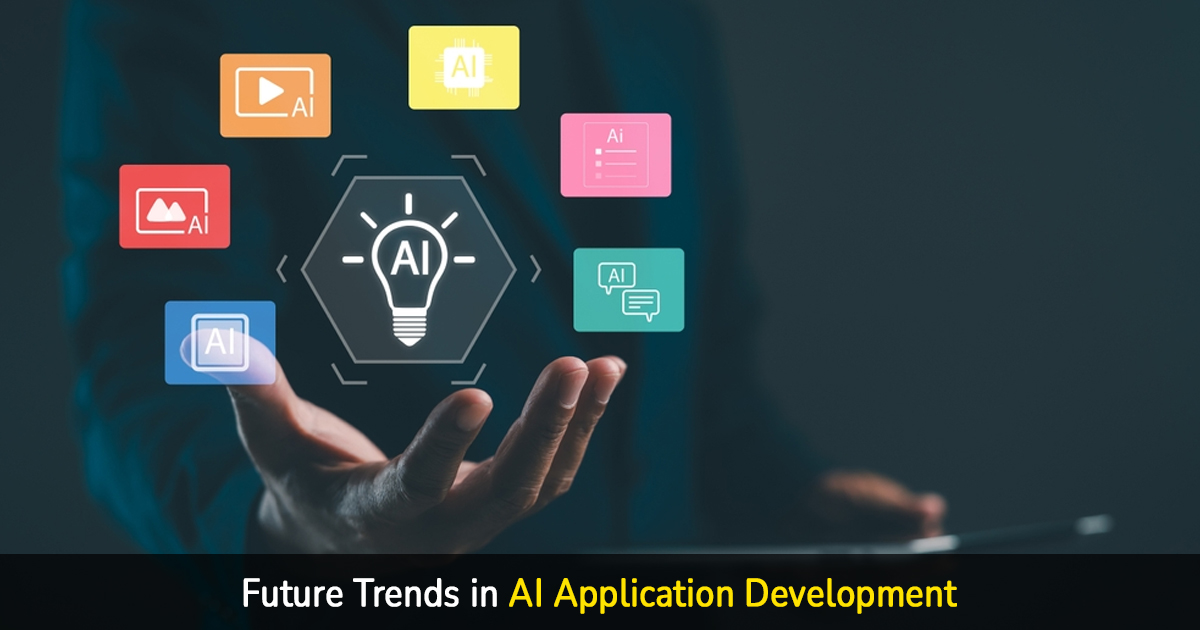
Expectations for AI’s future are high, thanks to developments like:
1- Generative AI
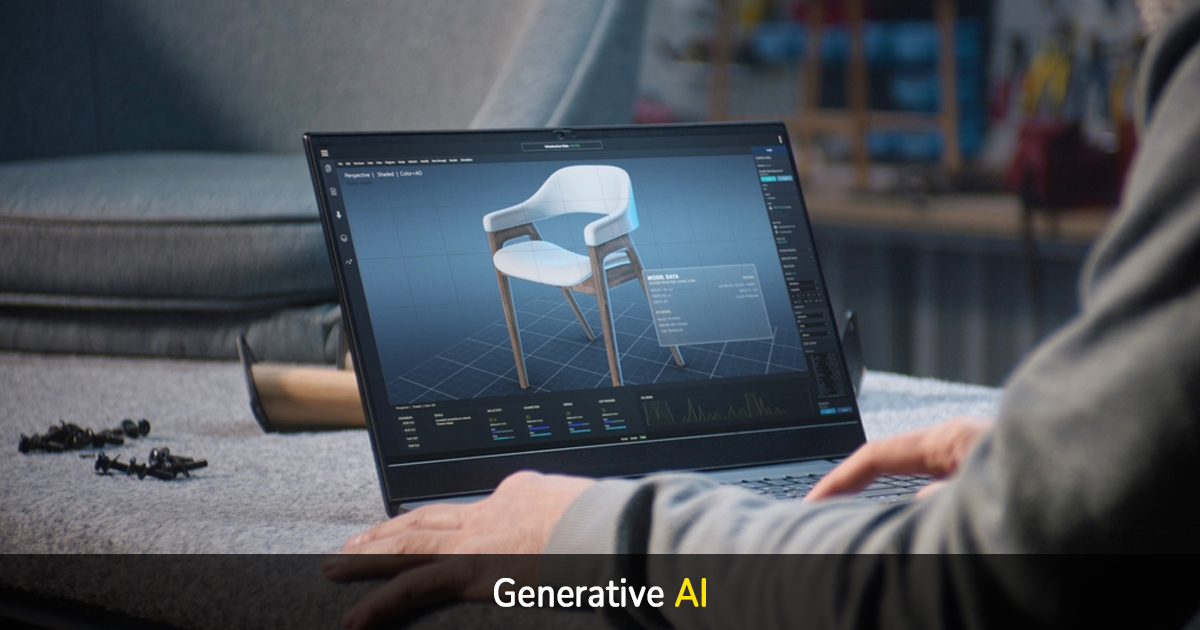
Generative AI is a subfield of AI that looks for patterns in data and uses them to generate new content, including text, photos, music, movies, and even code. Generative AI generates unique outputs that imitate human creativity, in contrast to conventional AI that mainly analyzes data for predictions or judgments. Generative Adversarial Networks (GANs) and large language models (LLMs) are examples of such advanced models. Generative AI is being used by businesses for a variety of purposes, including automated customer support, medicine discovery, content production, product design, and targeted marketing. One of the most revolutionary technologies influencing the future of industries, it can lower costs and speed up innovation.
2- AI-powered Automation
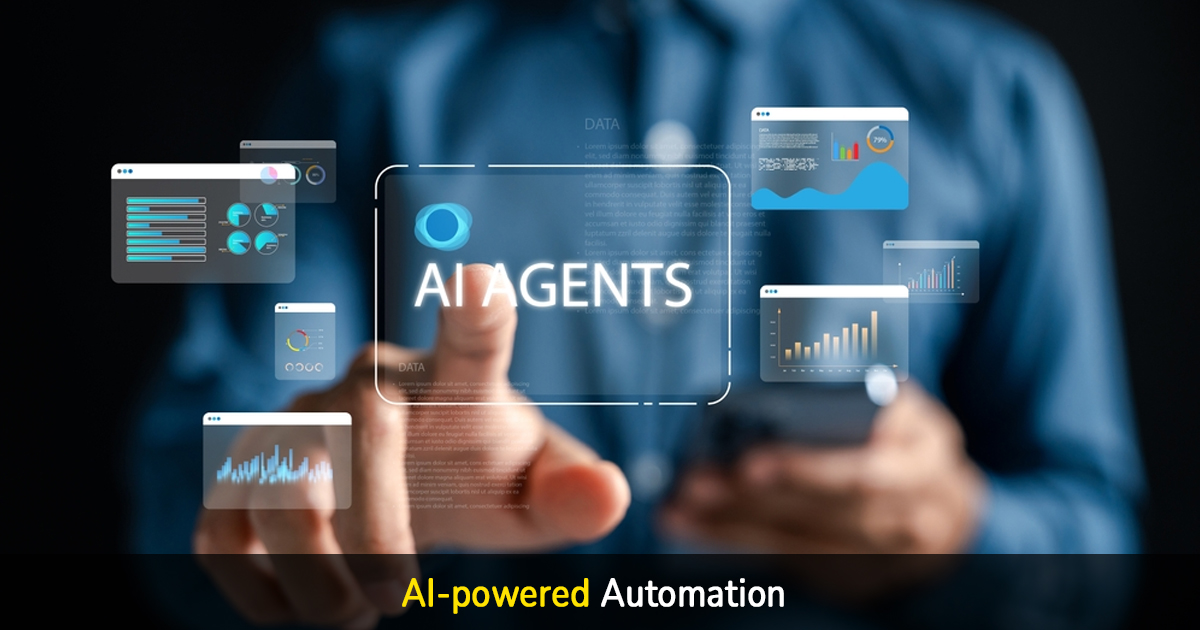
Streamlining workflows, eliminating repetitive tasks, and improving decision-making are all goals of AI-powered automation, which integrates AI with automation technology. Intelligent automation can learn from data, adapt to new situations, and manage complicated tasks with little to no human input, in contrast to conventional automation that adheres to predetermined rules. From improving supply chains and banking transactions to automating customer assistance with chatbots and forecasting equipment failures in manufacturing, businesses are employing it across industries. Robots driven by artificial intelligence not only boost productivity by decreasing operational costs and increasing efficiency, but they also free up workers to concentrate on more important, strategic work that fuels innovation and growth.
3- Explainable AI (XAI)

An umbrella term for a collection of methods and frameworks that aim to make AI systems’ decision-making processes more approachable and transparent to humans is “explainable AI” (XAI). In contrast to conventional “black box” AI models, XAI places an emphasis on interpretability, responsibility, and trust, and it frequently produces accurate findings without explaining their methodology. Critical in delicate industries like healthcare, banking, and law enforcement, it aids companies, regulators, and end-users in comprehending the reasoning behind an AI system’s forecast or judgment. Insights on model behavior provided by XAI help to decrease bias, assist regulatory compliance, and build confidence in AI-powered solutions. This ensures that these technologies are reliable and ethically sound.
4- AI in Cybersecurity

When used in cybersecurity, AI allows for faster and more accurate detection, prevention, and response times to cyber attacks than were previously possible with conventional security systems. Artificial intelligence can detect suspicious trends, forecast possible breaches, and automatically stop cyberattacks in their tracks by analyzing large amounts of data in real-time. Among its many uses are anti-phishing efforts, virus analysis, fraud detection, and intrusion detection systems. In contrast to rule-based security solutions, AI is able to learn and adjust to new cyber threats in real time, giving it a significant advantage in the fight against complex cyberattacks. By reducing response times and bolstering data protection and regulatory compliance, AI in cybersecurity helps organization’s implement more robust and proactive security measures.
5- Edge AI
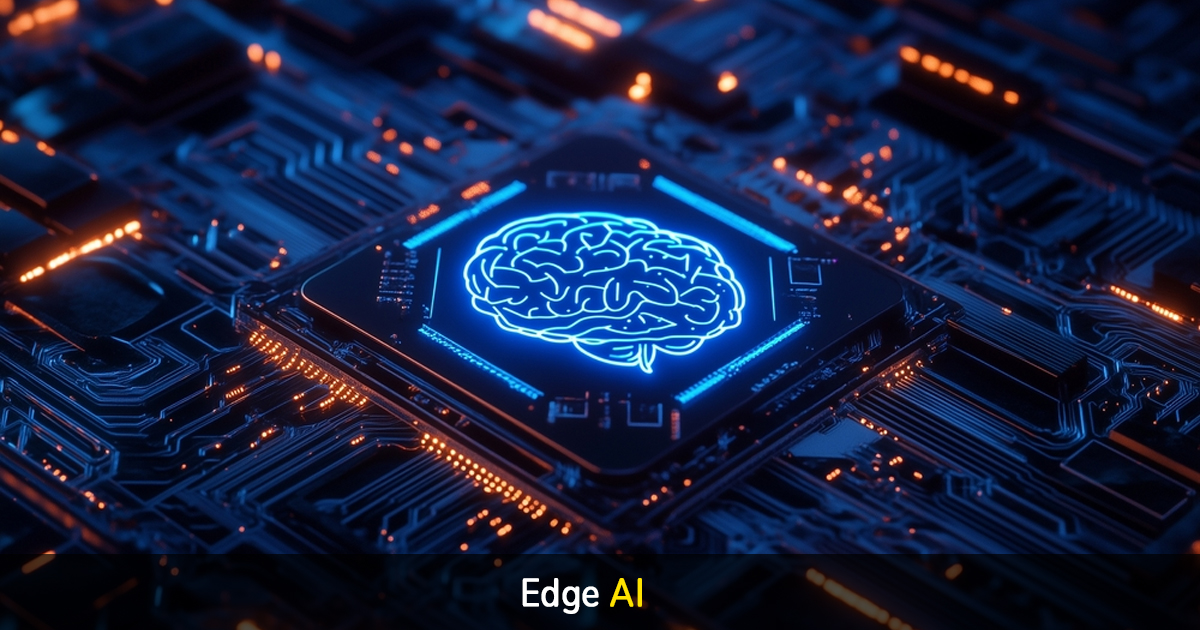
Edge AI allows for the direct deployment of AI algorithms to local devices like smartphones, Internet of Things (IoT) sensors, drones, or industrial machinery, bypassing the need for cloud computing altogether. Edge AI boosts speed, decreases latency, and increases data privacy by processing data closer to the source, or “edge” of the network. Autonomous cars, smart cameras, predictive maintenance, and medical monitoring systems are just a few examples of the many uses that benefit greatly from its ability to make decisions in real time. Edge AI provides better efficiency, cheaper bandwidth, and more dependable performance for enterprises, particularly in places where it is impracticable or expensive to have continual cloud connectivity. It’s a game-changing method that makes AI-powered products smarter, faster, and safer.
Conclusion
Businesses that want to succeed in today’s competitive market must prioritize the development of AI applications; it’s not merely a passing fad. Companies may increase productivity, boost customer satisfaction, cut expenses, and open doors to new business prospects by utilizing AI.
Although there are obstacles, companies that follow best practices, prioritize excellent data, and embrace ethical AI can create apps with lasting value. Those who jump on the AI application development bandwagon now will have a leg up in the long run.

